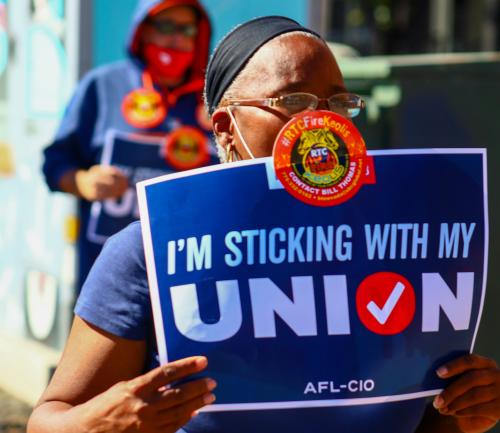When M&A activity picks up cash-rich firms search for bargains but that can leave companies feeling defenseless
The M&A market, largely dormant since the global financial crisis, is starting to experience a resurgence. Companies are holding cash at record levels and many are starting to look for ways to put it to work through acquisitions.
With prices depressed, many companies are seeing opportunistic approaches from these cash-laden acquirers. Offer prices are often at a generous premium to market prices but may still grossly undervalue the target’s real worth. Many companies fear they have been left largely defenseless by years of shareholder action that has removed many traditional protections from predatory offers, such as the poison pill.
Given recent levels of hostile M&A activity and ever-increasing shareholder activism, will the Delaware Chancery Court revisit case law regarding shareholder rights plans? We put this and other questions to Gibson Dunn & Crutcher’s litigation partner Adam Offenhartz and corporate partner Eduardo Gallardo.
There’s a perception that shareholder rights plans are anti-shareholder. Is this really the case? I think the rights plan has proven to be a very successful tool for a board of directors to insert itself in the process, slow things down and gain leverage it may not otherwise be able to achieve, often enabling it to extract a higher price or other favorable terms from a hostile bidder. Obviously, given the nature of a rights plan there can be – and probably has been – abuse from some people, but the opportunity for abuse exists with any corporate mechanism.
Slowing the process down can be pro-shareholder value. It allows the company to tell its story to shareholders. This can be abused and there can be instances where it is used to support entrenchment, which may be damaging to shareholder value. In and of itself, however, slowing the process is neither good nor bad.
Under what circumstances can the enactment of a poison pill boost shareholder value?
There are variations of language within certain rights plans and there are some features that differ but generally the rights plan is a fairly standard document, so I don’t think the plan itself is going to dictate how good or bad it is. Conceivably the technical aspects of a rights plan may affect how a court views the plan if it is challenged, but this won’t necessarily affect the plan’s ability to increase value.
Over the past couple of years we have seen a lot of companies remove their rights plans, often at the behest of shareholders. Has that created a situation where companies are now left defenseless against hostile bidders? There has clearly been a lot of pressure from shareholder groups and advisory companies to have rights plans either terminated or allowed to expire. That does not mean a company without a rights plan and facing a hostile takeover is defenseless, however. It can still go back and put one in place.
I think the decline in the number of plans in the past few years is more an indication of how successful some shareholder groups have been in forcing companies to deactivate these measures.
In the absence of a poison pill, are there other measures companies can take to defend themselves from an unsolicited takeover?
There are several things companies can do: they can increase their efforts to understand their shareholder base, and they can make sure they are keeping up to date on what – if any – history of activism there might be, the market sector, the general volatility of the market and the degree to which they could be subject to a takeover attempt. These are just some of the things a board would be well advised to be closely involved in on a regular basis.
Another thing companies should be doing is reviewing both their charter and their bylaws to understand precisely what anti-takeover mechanisms they have in place, making sure those things are properly spelled out in those documents – and making sure these provisions are in both documents. We have seen a number of instances where provisions that were in a bylaw were inconsistent with provisions in the charter document or just not properly spelled out in the bylaws, so they could potentially be subject to challenge from a bidder.
Now is a good time for companies to revisit their organizational documents in order to understand what they have, make improvements where necessary and ensure the language is consistent. The charter will typically override anything in the bylaws and, in some instances, state law is going to override the charter, so if something is inconsistent, there can be problems.
What is the current legal environment in the courts and among regulators regarding rights plans?
Things are a bit unsettled in Delaware right now regarding how the courts will deal with a rights plan in a takeover situation. A lot of people feel that the Unocal test should have real bite: it should inquire as to whether there is a legitimate threat to the company and whether any defensive measure – in this case a rights plan – is an appropriate response.
Some cases place a pretty high bar for proving that there is a real threat to the company; others suggest that the Unocal test has been watered down and that, as a practical matter, it is very easy to convince a court under the current interpretation of the test that there is a threat to the company and that a rights plan is an appropriate response.
One of the big issues is the concept of ‘substantive coercion’, which is the idea that a low share price in and of itself is a cognizable threat that justifies a rights plan. There is some dispute over the validity of this idea because there are people who think the market should act freely and that shareholders should have the ability to choose on their own. Determining the adequacy or otherwise of the price of a bid is not exactly the most complicated thing in the world, and an inadequate price in the view of the board should not be sufficient grounds to prevent the shareholders from voting for that bid.
This is really where the tension exists in Delaware law: who controls the bid process?
Is it the board, which can adopt a rights plan and act in a way that can maximize shareholder value, or should a non-coercive bid go straight to the shareholders to let them vote?
What do you think is the importance of the KPN vs iBasis case?
It is an interesting case for several reasons and it really catches a lot of the elements of the discussion. For instance, in KPN there was no rights plan in place because KPN bought a majority stake in iBasis and one of the acquisition terms it was after was that there would be no rights plan. Then iBasis and a special committee of the board implemented a rights plan that allowed the board to slow the process down, retain a banker who was able to present alternative views on valuation, and really push KPN as a practical matter to greatly increase its bid. Compared with the pre-bid price, the eventual takeover price was around a 130 percent premium. Without the rights plan one could argue that KPN would never have bumped up its offer price to such an extent.
One could also argue that it still comes down to the shareholders’ decision and, if sufficient shareholders had refused to tender at the lower price, KPN would have had to raise its price to clear the market. The reason we believe this to be a very significant case is because it shows that rights plans can be really useful to a board. It also highlights the issues under Delaware law that tend to be somewhat confusing.
What is the importance of the recent Selectica vs Versata opinion in the takeover context?
The Selectica issue arose out of the intentional triggering of Selectica’s net operating losses (NOLs) rights plan in December 2008 by its competitor Trilogy. The court’s decision in Selectica was intensely fact-driven. It did not squarely address the question of whether substantive coercion constitutes cognizable threat. In other words, it did not fully deal with whether a board may keep a rights plan in place simply on the basis of a good-faith belief that an acquirer’s offer price is too low. Because of this, the decision does not resolve the fundamental conflict between shareholder choice and board control.
This decision provides a road map for boards of directors facing an unsolicited offer, and should provide increased comfort to directors when taking appropriate defensive measures. But the court noted that the threat faced here – the loss of NOLs – was qualitatively different from the normal corporate control dispute that leads to the adoption or maintenance of a rights plan. Consequently, the parties to more customary corporate control contests are likely to battle over the exact contours of the Selectica decision.
Is there anything else management and boards need to be made aware of?
There have been some interesting discussions of the subject over the past few years. One of these concerns the extent to which poison pills should be modified such that a group of activist shareholders using derivatives to put together a provision in the company would be picked up by poison pills. There has been much debate concerning whether derivatives should count in terms of their accumulation being able to trigger a rights plan, and there are many different views there. Certainly, many companies have adopted pills that would be triggered in exactly this way.
There has also been a lot of discussion between companies as to the merits of an off-the-shelf rights plan for use as and when needed. This is a mechanism to keep boards up to speed on how a rights plan operates and what choices it would have if it was to implement a rights plan.
It is hard for a shareholder to argue against this because it is simply the company being prepared in the event that it has to implement a rights plan. It is hard to imagine any valid argument from shareholders against any company having an off-the-shelf plan sitting in the background.
Do you think we are in a situation where there will be more hostile takeover activity? We have certainly seen an uptick in the last couple of years. Just looking at the headlines over the last few months, there is definitely some major hostile activity going on. There have been a number of cross-border deals announced in the past few weeks.
Is there a possibility that a plan enacted can be challenged in court?
The type of rights plan we have been talking about often becomes the subject of litigation, and in KPN vs iBasis the plan was just one area of litigation between the parties. When thinking about hostile takeovers, litigation can be a very effective tool – on either side. Often people shy away from it, preferring to do a little pushing back and forth and settling for an extra 10 percent here or there.
But litigation often provides valuable information and an additional means of creating opportunities. I think corporate lawyers realize the value litigation can bring in a hostile defense or attack.
What do companies do wrong in litigation?
There are times when companies are not as careful and thorough as they should be with their disclosures, such as in the tender offer materials. We have seen both large and small companies and even those with good representation mess up on the small things, and that really opens the door.
Email always causes a lot of trouble. Invariably someone will send an email that contradicts – or appears to contradict – information disclosed in the tender offer materials, and when you get into litigation and find enough of those, you can cause real mischief. On the other side we have seen situations where the target completely forgot about its fiduciary responsibility to shareholders and sent emails that indicated it was possibly trying to entrench itself. There are also all sorts of things under Delaware law that need to be heeded, like properly setting up an independent committee, formulating your defense to a bid and taking all the right steps. The lesson here is that when the pressure in on, people can act rashly and do stupid things – so you need to keep control over as much as you can.








